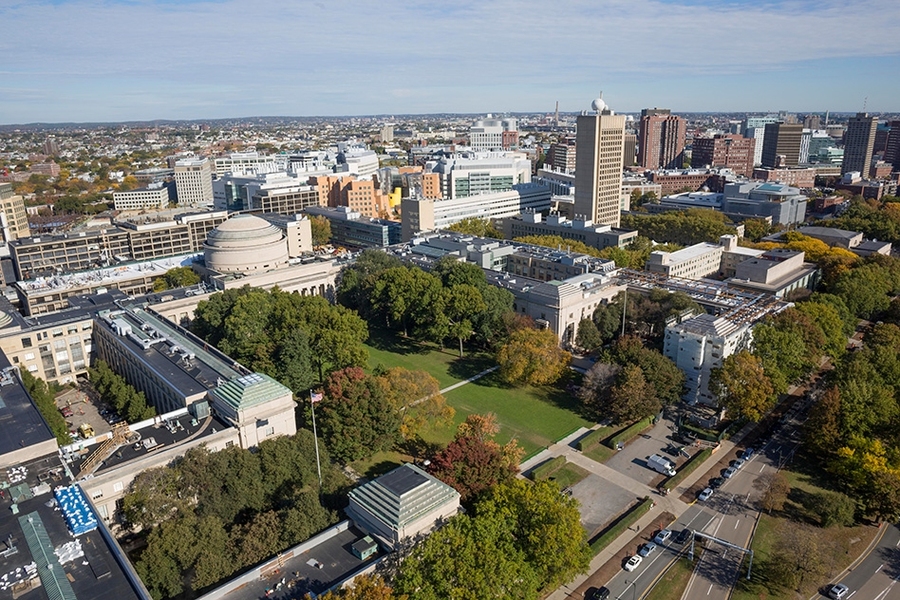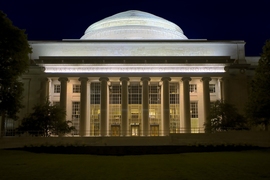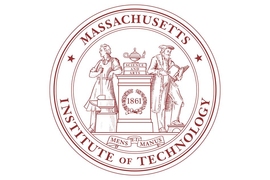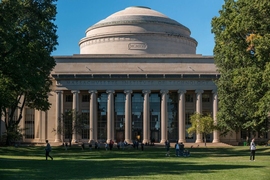In late March, as part of the Institute’s response to the evolving Covid-19 pandemic, the Team 2020 working group was charged with rigorously evaluating options for the upcoming academic year, to inform the final decisions by the senior administration.
Co-leads Ian A. Waitz, vice chancellor for undergraduate and graduate education, and Tony P. Sharon, acting deputy executive vice president, dove into the complex task, framing it as “defining all the switches that needed to be turned off (to scale back operations) or turned on (to return to different increased-density operational states), and some sensible order for doing so, under different scenarios.”
On Friday, Team 2020 released a report online that synthesizes its assessment of options for the upcoming academic year. The working group based its findings on many inputs from the MIT community, from charrettes to town halls to pulse surveys, expertise from public health and medical experts, guidance from local and state government officials, and consultations with peer institutions.
MIT President L. Rafael Reif and the senior leadership team will review and carefully consider the results to inform their deliberations about the upcoming academic year. A decision is expected by early July.
Framing the journey
Developing the options involved more than simply figuring out operational mechanics. The team quickly recognized that any solution had to advance MIT’s academic and research mission while embracing the Institute’s values, such as maximizing equity and inclusion, and keeping the community safe and healthy as the campus is repopulated.
“With all of the unknowns in play and the evolving nature of the pandemic, identifying viable academic options for the fall and beyond has been one of the most complex challenges I have been part of during my time at MIT,” says Waitz. “The ramp-up to deliver remote learning last spring was an intense sprint for sure, but imagine then having to factor in physical distancing, testing, research space and residential limitations, individual and group preferences, and, of course, human behavior.”
To get their hands around the problem, Waitz and Sharon conducted an external scan, seeking advice from public health and medical experts, incorporating readouts from Director of Emergency Management Suzanne Blake’s ongoing conversations with local and state government officials, and consulting with peer institutions, both locally and across the country. Closer to home, they turned to other MIT Covid-19 working groups focused on research, led by Vice President for Research Maria Zuber, and business continuity, led by Robin Elices, executive director in the Office of the Executive Vice President and Treasurer. Other key input included transmission models developed by Associate Dean of Engineering Peko Hosoi and the Institute for Data, Systems, and Society, along with a detailed physical-distancing analysis of every campus building, provided by Associate Provost Krystyn Van Vliet’s team.
Out of this avalanche of information, Team 2020 zeroed in on two key questions: how to operate the curriculum for undergraduate and graduate students, and how many undergraduates to invite back and when. “For undergraduates, a particular challenge is managing the significant constraints around housing and residential life, especially as we do not have enough housing to accommodate the needs for physical distancing and to be ready for a potential spike in cases during the fall or winter,” Waitz explains.
Any path forward must also take into consideration the gradual research ramp-up and return of graduate students, both of which are happening now. “It is more feasible to bring graduate students back to campus safely because, unlike undergraduates, nearly all graduate students live in apartment-style residences,” Waitz notes.
Team 2020 ultimately evaluated five potential options, from conducting all instruction online in the fall to bringing all undergraduates back to campus. In summary, the five options are:
- invite all undergraduate students back in the fall for in-person teaching;
- a delayed start, with two full semesters beginning in early January;
- two semesters, with 60 percent of undergrads invited back in the fall, and 75 percent in the spring;
- a three-semester model, where all undergrads are guaranteed two out of three semesters on campus; and
- a fully remote fall, with the degree of in-person teaching for spring to be determined later based on conditions closer to that time.
All options share two assumptions: that for fall 2020 (and perhaps spring 2021), most of the curriculum that can be online, will be online; and that any on-campus instruction will take place in a physically-distanced way, thereby reducing capacity in learning spaces, and will require other safety practices such as wearing face coverings in classrooms, research labs, residences, and work spaces.
“We were able to take those two assumptions and hang them around two dominant models: a two-semester model and a three-semester model,” says Waitz. “We know the two-semester model already. The three-semester configuration opens up more capacity for students returning to campus, but has major implications associated with the academic calendar, determining what to teach when, and who comes back and when.” Each of these models can be operated with varying degrees of in-person and remote education, and the timing of each can be adjusted in terms of start and end dates.
Getting the lay of the land
Team 2020 knew that any potential option had to be informed by MIT’s community. What might the team have missed? What other approaches should be considered? How might each option impact various individuals, departments, and groups on campus?
With that in mind, Waitz and Sharon asked a subgroup to develop ways to engage the community, led by Kate Trimble, senior associate dean and director of the Office of Experiential Learning; Ceasar McDowell, professor of the practice of community development; Kate Weishaar, project coordinator in the Office of the Vice Chancellor; and John Fernandez, professor and director of MIT’s Environmental Solutions Initiative. In addition, the subgroup was tasked with creating an online resource [MIT certificate required] to share many of the underlying assumptions and considerations of any given approach. The goal was transparency and collaborative problem-solving, in typical MIT fashion.
In late May, the subgroup developed a three-pronged strategy to solicit community input: an online feedback form, community charrettes (a time-tested approach to community-centered design), and small group discussions.
“The response was truly incredible. The community more than stepped up,” says Trimble. There were roughly 425 charrette participants in 70 different breakout sessions, aided by 90 volunteers serving as facilitators and note takers. The online form, which had 900 complete responses and an equal number of partial responses, garnered 27,000 comments. And 17 self-organized groups held discussion sessions, involving undergraduate students, parents, Sloan fellows, faculty, staff from the MIT Libraries and Registrar’s Office, and others.
These efforts complement other engagement opportunities that have taken place over the past three months, which have also informed Team 2020’s work. President Reif and the deans hosted Institute-wide and school-level “town halls” to solicit feedback, field questions, and note concerns. Department heads led vibrant local-level discussions. The Division of Student Life (DSL) and student government held online events for students, and the heads of house convened their residents. Community members completed numerous short “pulse” surveys to help home in on key issues. And as of late last week, more than 3,600 undergraduates (including the incoming class) completed a survey to better understand their preferences for fall — a 79 percent response rate.
“All of this input has been invaluable, along with the Academic Continuity Working Group’s efforts to test out potential ideas and foster debate. There have also been also hundreds, if not thousands, of emails and contributions from the other Covid-19 working groups that have helped us understand the wide range of community perspectives and refine the options,” adds Trimble.
Analysis and key takeaways
Consolidating and synthesizing the mountains of feedback was no small feat. Staff from Institutional Research, the Teaching + Learning Lab, the Admissions Office, DSL, and the Office of the Chancellor, among others, stepped up to turn qualitative and quantitative bits and pieces into a coherent picture.
The result is a final report that presents “best” versions of the five options for the fall and beyond. Each is informed and improved by community engagement and external inputs, and describes the advantages and disadvantages in the context of potential future scenarios — from a spike in Covid-19 infections to the introduction of a vaccine.
“These are not truly the best versions — yet. Once the general direction is set, much work will be required to refine them further,” says Waitz.
The report also provides a window into Team 2020’s process, sharing guiding principles and values, a compendium of community inputs, key considerations for the decision, and selected background materials.
In addition to its findings, Team 2020 identified several key takeaways:
- Community buy-in: The level of engagement is a reflection of the remarkable character of our community. Students, faculty, and staff clearly appreciated the extreme complexities involved in the process. Moreover, while community members indicated that they value personal choice, they also care deeply about one another and seem ready and willing to adapt for the sake of others’ well-being.
- Values and principles: The importance of values and principles in informing this work is clear, particularly the shared sense by our community that accomplishing MIT’s mission and community health and welfare are paramount, as is paying attention to diversity, equity, and inclusion when making decisions that will impact all of our community members in different ways.
- Embracing change: Any option for the fall will require non-negotiables (e.g., the need for physical distancing and testing) and will be subject to constraints, such as available student housing and the academic calendar.
- Accepting the unknown: Future uncertainty, and what we do not know currently, are perhaps the most important factors right now, and in looking ahead. Our plans for the coming year will need to build in responses to a range of possible shifts in public health.
“This process was a testament to the intelligence, dedication, and creativity of the MIT community, and I cannot thank everyone enough for their important contributions. We know that our final product was made immeasurably better by incorporating diverse community voices, and we trust that it will prove to be useful in informing the final decision,” says Trimble.
Waitz expects that, as with the transition to remote learning this spring, “what we learn from this process will not just factor into the fall, but will result in broader lessons that could inform how MIT operates in the future.”
To that end, Vice President for Open Learning Sanjay Sarma and Chair of the Faculty Rick L. Danheiser are co-leading the 2021 Task Force to consider longer-term implications for the Institute.










